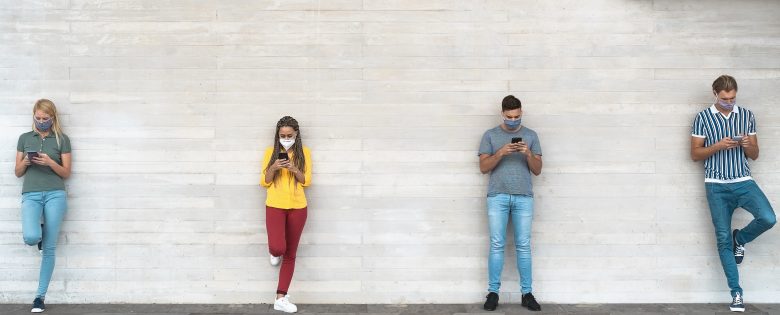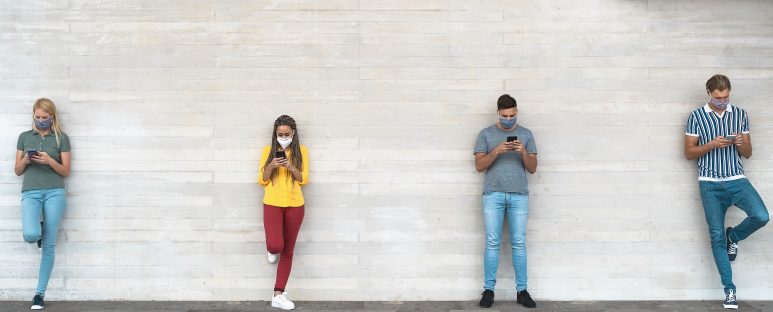By Ivana Jovanovic
Despite numerous conspiracy theories about COVID-19 and inaccurate information about prevention measures, medicines, vaccines and pseudo-scientific theories, youth portals in Serbia have been (mostly) doing well in reporting on the risks of “infodemic”. Media Diversity Institute’s MLADI: Media Literacy Alliance and Digital Importance project conducted a research titled “Youth in the Media Mirror 2020”, as a continuation of similar research activities in 2017, 2018 and 2019. However, this time the focus was on the COVID-19 pandemic and the subsequent “infodemic”. Following the methodology that was used in previous years, Youth in Media Mirror 2020 looks at how the media in Serbia reported on the youth. At the same time, this year a special segment of the research is dedicated to how the pandemic has affected youth content in youth media.
The dominant topic in content related to the pandemic was the situation abroad. This is due to guest-workers and students who live abroad, but also due to the situation in countries with popular summer resorts before the summer season. However, youth portals also covered the situation in Serbia, including important aspects such as human rights and freedoms, mental health, even drug use and abuse and the position of addicts.

The research also looked at the Serbian YouTube sphere. The results show that 20 of the most popular YouTubers in Serbia “almost without exception promoted responsible behavior, without flirting with pseudo-scientific theories and spreading panic”. In addition, most YouTubers asked their followers to be responsible towards themselves and others. Although the research notes that in some clips some YouTubers do not wear masks and do not stick to the distancing measure in situations when it would be necessary, there was no case of calling for irresponsible behavior.
In the previous research, part of the YouTube scene in Serbia had been criticised for spreading hate speech, vulgarity and promoting negative values, but this year’s findings indicate that the stars of the national YouTube scene took the pandemic rather seriously. Although COVID-19 was not the dominant topic and is mentioned in less than 10% of videos, almost all most popular YouTubers called for respect for the prevention measures.
Although games were the most popular content during 2019, during 2020, the most popular content was experiments and challenges, while gaming fell at second place. This content can be filmed at home and that is why videos about traveling and meeting fans have dropped sharply.
Since the research “Youth in the Media Mirror” was first conducted in 2017, the content about young people has been continuously increasing and is now twice as high as in 2017. However, this trend should not necessarily be seen as positive, because the dominant topic in mainstream media is the safety of young people, where young people are actually mentioned as victims or perpetrators of violence and crimes.
According to the research data used in Youth in Media Mirror, the news related to violence and crime “is so dominant that it leaves in the shadow all other topics of importance for young people”. Young people are portrayed negatively in the mainstream media- as lazy, violent, immoral. The positive context is dominant only in the newspaper Danas and on the public service media Radio-Television Vojvodina, while on Radio-Television Serbia (RTS) the positive and negative contexts are equally present.
It is worth noting that RTS, as in previous years, approached this topic professionally. When reporting on young people, public service media (PSM) focused on youth, giving them voice before the representatives of the government or institutions. PSM also respected other aspects of diversity such as equal gender representation as well as representation of other minority groups. However, despite positive trends on PSM, the overall impression is that with such (incomplete) presentations of young people, the mainstream media only increase the generation gap.
When reporting about the actors of crimes, journalism code of conduct is most often violated, including disrespect for the presumption of innocence, violation of privacy, exposing nationality of the perpetuators, etc.
As in previous years, youth activism is among the least covered topic. However, in 2020 it had five times less representation compared to 2019, with only 2% of the content covered by the research featured activism.
Other problematic tendencies of mainstream media were noted: young people are represented as a homogeneous group; young men are three times more represented than women; vulnerable groups are extremely rarely reported. Newspaper Blic was a leader in affirmative reporting on young people. However, Blic has shown more sensibility for young people in previous research.
Mainstream media in Serbia rarely use multimedia tools, unlike youth media. Youth media offer their audiences memes, infographics, vlogs, podcasts. Also, this year’s research confirms earlier findings that youth portals show “a clear orientation towards young people and their problems, with detailed analyses, proposed solutions and active dialogue with their target group”. When we look at these results, it is no surprise that a large number of young people choose to not be informed in traditional media, but through social networks and portals. Mainstream media do not recognise problems and the needs of young people, and at the same time they fail to make use of new formats attractive to young people. Mainstream media should find ways to address their audience, and one of the ways forward in doing that is to open space for young people in their newsrooms.
For more information on MLADI, visit the project’s website.
Photo credit: AlessandroBiascioli / Shutterstock

